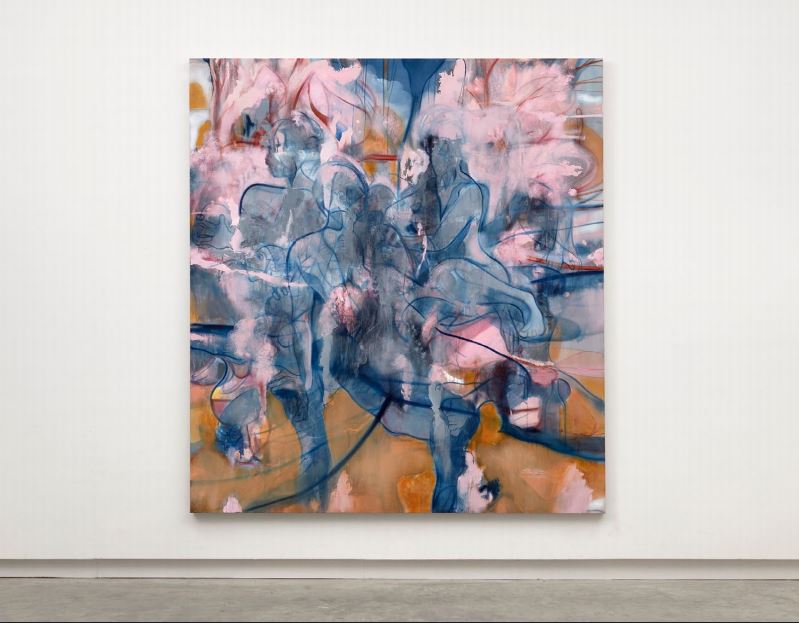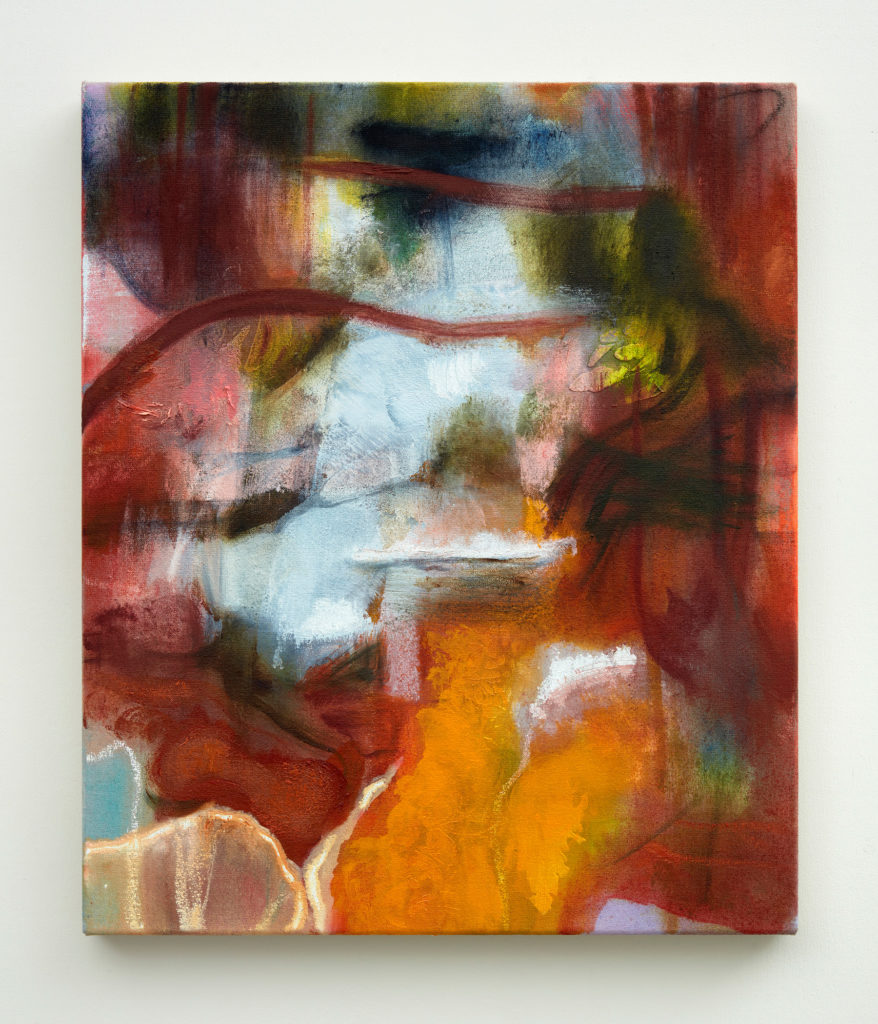British Artist Nigel Cooke Conjures an Imaginary Journey for his New Exhibition


Katie White

The dexterousness of British artist Nigel Cooke’s most recent body of work is captured succinctly in his acidly hued and monumentally scaled Spring Bathers, one of six paintings in the artist’s small but illuminating debut exhibition with Buchmann Galerie in Berlin.
A tangle of seemingly nude figures appear entwined and in various states of repose amid a hazily articulated landscape. A jug, for water or wine, sits on the lower left of the canvas.

Nigel Cooke, Blossom Shade (2019). Courtesy Buchmann Galerie.
Hovering between figuration and abstraction, Spring Bathers draws from a deep well of art historical references. Édouard Manet’s Le Déjeuner sur l’herbe and Pablo Picasso’s Les Demoiselles d’Avignon come to mind, and while one is aware of these visual allusions—and experiences, in some sense, their after effect—Spring Bathers seems wholly new, unusual even. Here, the familiar is draw into the realm of the uncanny.

Nigel Cooke, Beach Fires (2019). Courtesy Buchmann Galerie.
Cooke creates a kind of journey, a half mythical tour, with paintings named Bonfire and Blossom Shade, while smaller paintings bear the names of towns in Italy Cooke has traveled through, such as Borca or Fornarelli. Although Cooke is known for his highly personal, narrative figurative paintings, these most recent works show a move towards abstraction and an almost Fauvist color palette.

Nigel Cooke, Borca (2019). Courtesy Buchmann Galerie.
“If you look at the smaller works, they are very abstract and part of what he would call the Italian landscapes,” André Buchmann says. “There is hardly any figurative element visible in these paintings. It’s no longer representing anything, but a memory of something. It’s a visible memory, but it’s also a psychological stage.”
“Spring in Fialta,” the exhibition’s title, is taken from the name of a short story by Vladimir Nabokov. The story tells the tale of a man and woman who have an encounter in the fictional Mediterranean town of Fialta, and drifts between memory and the present. Here too, Cooke bridges the space between the real and imagined and asks viewers to participate in this act.
“This exhibition becomes a fantasy place or an imaginary place,” Buchmann says. “I find that very wonderful. The real becomes unreal. And the unreal, perhaps, realer.”